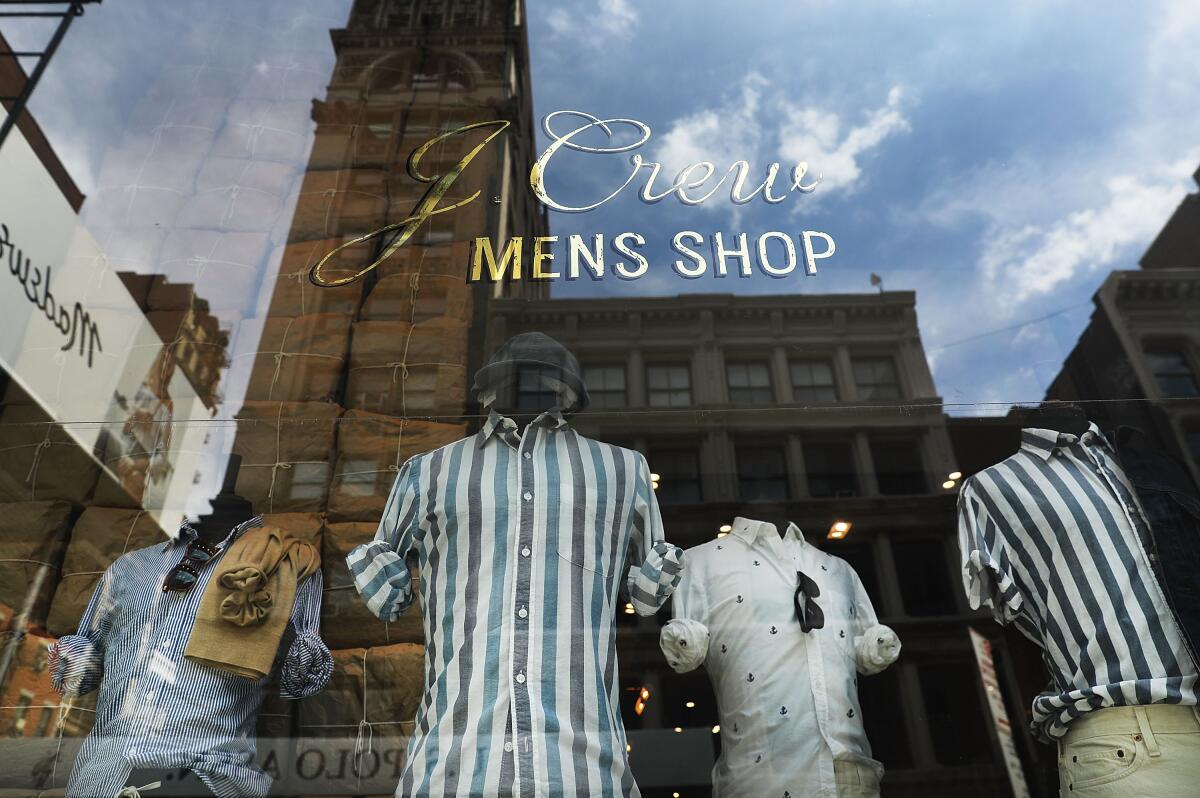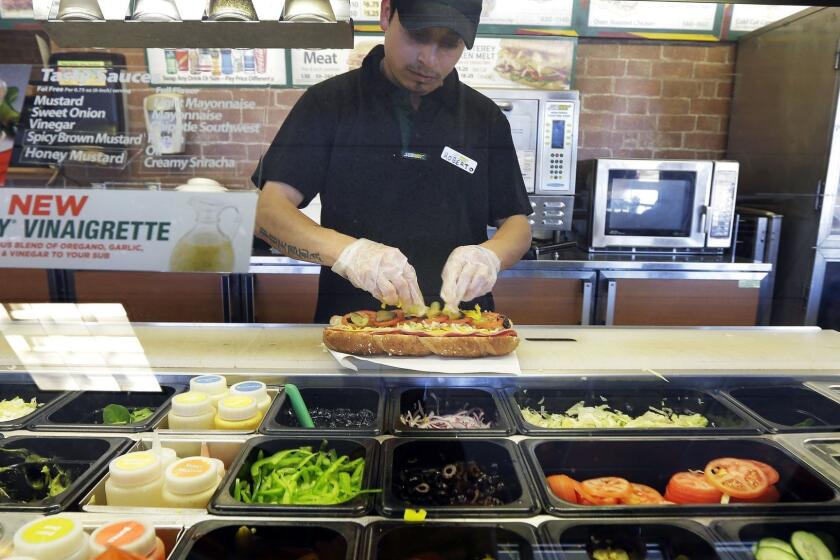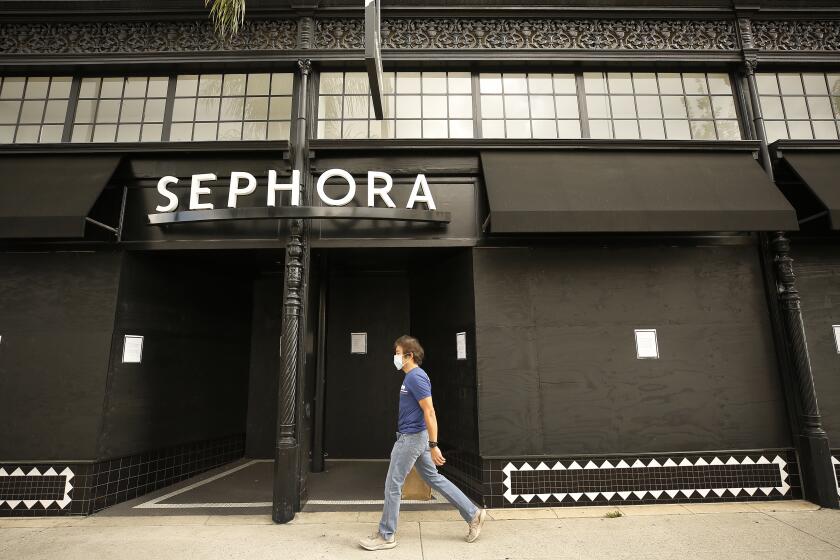J. Crew files for bankruptcy, slammed by coronavirus and debt

- Share via
J. Crew Group Inc. filed for bankruptcy protection with plans to hand control to its lenders, unable to revive its preppy clothing line amid the pandemic and crushed by debt rooted in a long-ago leveraged buyout.
Although J. Crew’s struggles predated the coronavirus outbreak, it’s the first bankruptcy filing by a major retailer during the economic near-shutdown, which has pushed dozens of chains to the brink of failure. Neiman Marcus Group Inc. and J.C. Penney Co. are among merchants that could be days away from default.
J. Crew’s Chapter 11 filing in U.S. Bankruptcy Court in Richmond, Va., allows the company to stay in business while cutting its debt. Normally that would include keeping the doors open for its J. Crew and Madewell stores, but sales at those outlets vanished when the coronavirus forced shoppers to stay home and nonessential businesses to shut.
Anchorage Capital Group, Blackstone Group Inc.’s GSO Capital Partners and Davidson Kempner Capital Management will be among J. Crew’s new owners and will shape the board of directors once it exits bankruptcy, according to court papers. Those firms are leading a $400-million bankruptcy loan to keep J. Crew operating, according to a statement Monday.
Major retail and restaurant chains are telling landlords they will withhold or slash rent in coming months after closing stores to slow the coronavirus.
About $2 billion of debt will be converted into equity, according to court papers, wiping out existing stakes held by TPG and Leonard Green & Partners, the private equity firms that acquired J. Crew in a 2011 leveraged buyout.
The company has about 181 J. Crew-branded stores worldwide, with 140 Madewell stores and 170 factory stores, court papers show. It employed about 13,000 people, with 11,000 furloughed during the shutdown. J. Crew said it’s “hopeful that jobs will be minimally impacted when stores reopen.”
Suppliers may be hit hard by the bankruptcy deal, which calls for a 50% cap on their claims and a total pot of $50 million, and that’s if they sign a new trade agreement within 30 days. Other low-ranking creditors will share a disbursement as low as $1 million depending on how stakeholders vote, according to court papers.
Revenue for 2020 is expected to be down about 32%, according to a regulatory filing, with a measure of adjusted earnings down 53%.
The rise of online shopping forced thousands of stores to close in the last decade, but the fallout from COVID-19 could put many more out of business.
Even before the coronavirus spread, the company was struggling because shoppers were defecting to online merchants and consumer tastes were changing. J. Crew had been trying to rebound from some fashion misses and complaints of poor-quality clothing.
The company managed to sidestep default in 2017, with a financial overhaul that included shuffling assets in a way that moved fast-growing Madewell out of creditors’ reach.
The change did little to reverse the company’s fortunes, but it irked creditors and turned J. Crew’s name into a synonym on Wall Street for lopsided debt deals that leave lenders with weaker claims on company assets. The deal resulted in two lawsuits, court papers show, and J. Crew has appointed someone to review whether it could result in any more lawsuits during the bankruptcy.
J. Crew was relying on an initial public offering of Madewell to raise capital and ease its heavy debt load, a legacy of the 2011 buyout. The turmoil in financial markets put an end to that option.
Madewell will remain part of J. Crew under the bankruptcy agreement reached with its lenders, according to the statement.
More to Read
Inside the business of entertainment
The Wide Shot brings you news, analysis and insights on everything from streaming wars to production — and what it all means for the future.
You may occasionally receive promotional content from the Los Angeles Times.










